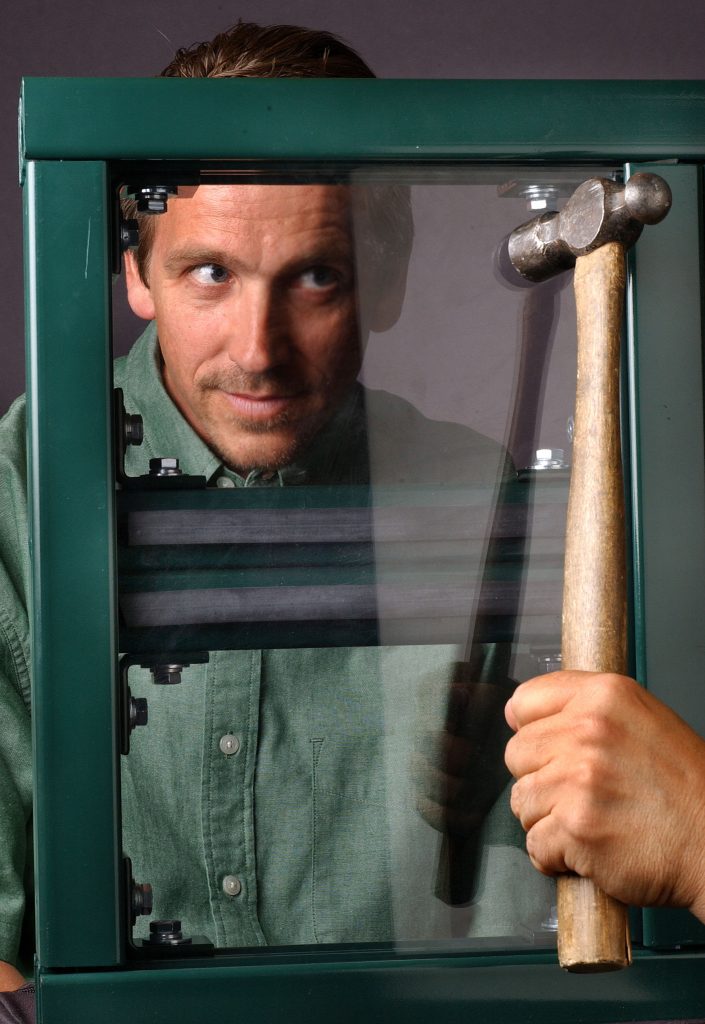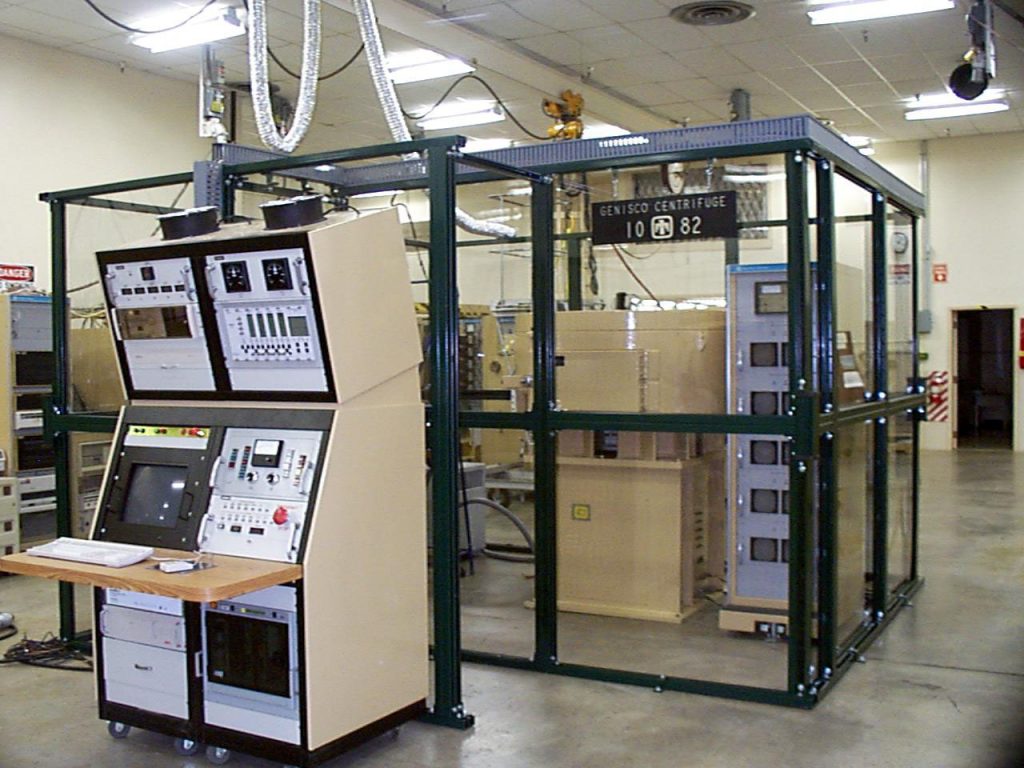
ALBUQUERQUE, N.M. — A transparent barrier system designed by an engineer at the Department of Energy’s Sandia National Laboratories might one day help protect VIPs from would-be assassins, police from rioters, and crowds from bomb shrapnel.
The barriers also might make quick-install, bullet-resistant shields for sniper protection around gas pumps, for instance.
Keith Snyder of Sandia’s Test Equipment Design Department originally designed the system as an inexpensive alternative to surrounding a large rotating centrifuge with concrete, steel, and soil to protect workers from flying machine debris in the unlikely event of an accident.
Snyder combined several commercially available products into a unique shielding system that is far less expensive and quicker to build than the 4-foot-thick concrete walls or underground bunkers normally relied on for safety containment of heavy rotating machinery.
Following Sept. 11, 2001, he envisioned several possible security uses for see-through, modular, easy-to-install barriers: to shield people from bomb blast shrapnel at public gatherings, to protect important functionaries who might be targets of assassins or terrorist small-arms fire during public appearances, to keep police safe and separate from rioting mobs, and as bullet-proof guard booths, for example.
The barrier system includes sheets of polycarbonate (clear plastic, such as Lexan®) glazed into frames made from Unistrut®, which are commercially available pre-drilled steel bracings that fit together like pieces of a giant erector set. In industrial settings, Unistrut® is commonly used to create overhead tracks for electrical conduit, racks, shelving, stairs, and other structures.

For machine containment, the impact-resistant transparent sheets provide the advantage of allowing operators to safely see the machinery behind the barrier during operation, says Snyder, who studied several glazing and bracing configurations to make sure the barrier could contain whatever was flung at it by the machine.
In particular, a series of projectile impact tests conducted at the Southwest Research Institute in San Antonio, Texas, examined how load is transferred and absorbed by the polycarbonate and bracing system when the barrier is struck by flying objects in the worst-case mishaps.
Three-quarter-inch-thick Lexan® is rated as bullet-proof against small arms fire, he says.
Gas stations could probably install temporary shields around pumps for a few thousand dollars, Snyder says.
The first such barrier was installed two years ago around a large centrifuge at Sandia’s Weapons Evaluation Test Laboratory at DOE’s Pantex Plant near Amarillo, Texas.
“We built it in four days for about $30,000,” he says, about one-tenth the cost of the proposed conventional containment structure of concrete and steel.
Sandia recently received a US patent on the modular barrier system for both machine-containment and security applications. Snyder says he’d be interested in sharing the barrier design and performing testing to make the system available for public use, should the need arise.
More about the project, including downloadable video clips of high-speed impact testing, is available at http://www.sandia.gov/security/Security_Barrier/.
Sandia technical contact: Keith Snyder, kwsnyde@sandia.gov, (505) 844-6892